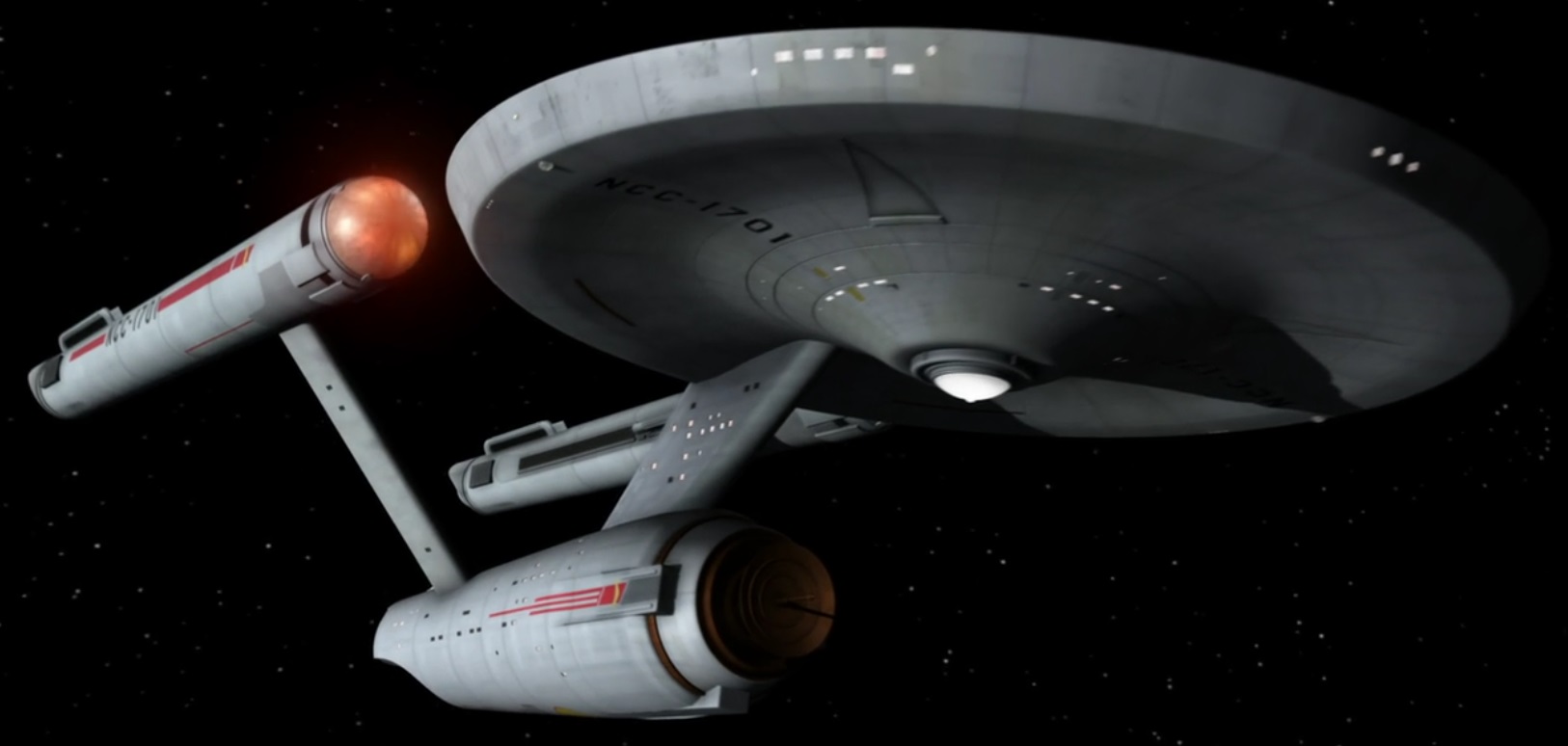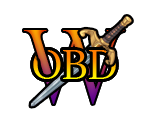 |
| The one ship which began it all |
Name: USS Enterprise NCC - 1701
Origin: Star Trek (the original series and movies 1-3)
Type: Constitution-class Heavy Cruiser Starship, Space Combat and Exploration Vessel
In use by: United Federation of Planets, Starfleet
Captain: James T. Kirk (most famous captain, others include: Robert April, Christopher Pike, Willard Decker and Spock)
Crew: 430
Dimensions: length: 947 feet (~ 288.6 meters), width: 417 feet (~127 meters), height: 208 feet (~63.5 meters)
Powered by: Warp Core (antimatter reactor), many backup impulse reactors (nuclear fusion engines)
Destructive Capacity: Continent level (at least 4 petatons for a phaser burst, 66 petatons per photon torpedo)
Durability: At least country level for the hull (phasers on 1/100th power are completely harmless against it), continent to planetoid level for the shield (on full shield strength can tank a burst from the Planet Killer, equaling about 6 exatons)
Material: Duranium and tritanium/titanium alloy composite reinforced with structural integrity fields
Performance: FTL via impulse drives (can travel from the edge of the galaxy to Earth under "years"), MFTL via warp travel (depending on warp factor between hundreds of thousands to hundreds of trillions of times the speed of light), MFTL reactions (close to billions of times FTL, the crew has tons of time to react against a Warp 15 projectile coming from 90,000 kilometers away)
Weaknesses: The ship can easily be overstrained via various reckless use, temporally or permamently knocking down systems or even destroying its dilithium crystals. Dilithium crystals transmit all power through the ship and needs visiting dilithium mines for replacement. Every sub-system is manually operated meaning the command bridge mostly just issues orders to them, the real control hub of the starship is its engineering room which can apparently overwrite any command. The ship's security can be ridiculously incompetent at times. Intense radiation (like nukes) can slightly penetrate the hull to hurt the crew even if the ship is undamaged.
Terrain: Air, Space
Needed Prerequisite for Use: Access to the computer command codes, knowledge of its operation and at least a skeleton crew (much more than 20 people) to control the ship
Operational Timeframe: Impulse Drives on emergency power can last for half a day, normally capable of operating for at least half a year without resupply
Weaponry:
- Phaser Banks x 12
- Torpedo Ports x 7 (carrying hundreds of photon torpedoes total)
- Tractor Beams
Weapons Range: At least 90,000 kilometers via tractor beams and transporters, tens of millions of kilometers via phasers and photon torpedoes, sensor scans can reach for a few lightyears
Defensive Systems: Deflector Screen
Special Forms: N/A
Notable features: Durable armored hull reinforced with structural integrity fields, inertial dampeners, warp drive which can lighten the ship for more energy-efficient travel, warp space/time for FTL travel or with certain conditions even allow time travel, deflector shields, replicators to produce food or almost any common materials, transporters to beam up or down people/equipment, tractor beams to attract/repel objects, 14 science labs, advanced medical facilities, self-destruct system, advanced computers, sub-space comms and various sensors (both being FTL), able to scan entire star systems in great detail (like tracking the number of life signals, detecting radiation, poisons, diseases or debris of destroyed space vessels)
Notable Attacks/Techniques:
- Proximity Blast: Phasers are set to release their energy in a single burst and detonate after reaching a certain distance. Dispersity set to 100% this function was used against the Romulan Bird of Prey because the latter's stealth system prevented to Enterprise from pin-pointing its exact location.
- Slingshot Effect: With the correct calculations and warp settings if the Enterprise approaches the gravitational field of the star, accelerates while orbiting it and then quickly break away via maximum warp factor they can manage to travel in time. Because of the rudimentary nature of this tech, timing is extremely important but if accomplished well it's possible to travel both back in time or returning safely. This method causes lot of strains, consumes much energy and of course requires a sufficiently large star (like our Sun) to accomplish.
- Transporters: The Enterprise has a transporter which can break down people/objects into energy, send them out as a beam and then reconstruct them in their original form, effectively working like teleportation. Energizing and reconstructing takes some time and when it malfunctions the consequences could be grave. Transporters have limited range (compared to other equipment on the ship), can only penetrate material up to a limited thickness (1km solid rock, for example) and is affected by shields or electromagnetic interferences. The heaviest it was impled to transfer was 1000 tons (it was done by the inferior technolog of a Klingon Bird of Prey in the fourth movie). Transporters are based on a technology similar to replicators and technically their potential is far more versatile than just to transport people. At one time a transporter malfunction caused to split Kirk's rational and primal sides into two bodies, though the process was very unstable and required a fix. Another time an ionic storm and overlaping locations in two parallel worlds resulted in Kirk and the cast accidentally switching places with their counterparts in a mirror universe. Eventually they returned to their original world and overall this feat doesn't seem to be impossible to replicate. Lastly transporters can be used to intercept other transporter signals nearby or take objects to other places than the transporter room. Though it seems they first require to briefly transfer the object to the transporter room and then into the place they want it to end up in.
Other: This only covers the original USS Enterprise from TOS, not the lettered models, the alternate reality versions, the reboot movie version or anything else.
